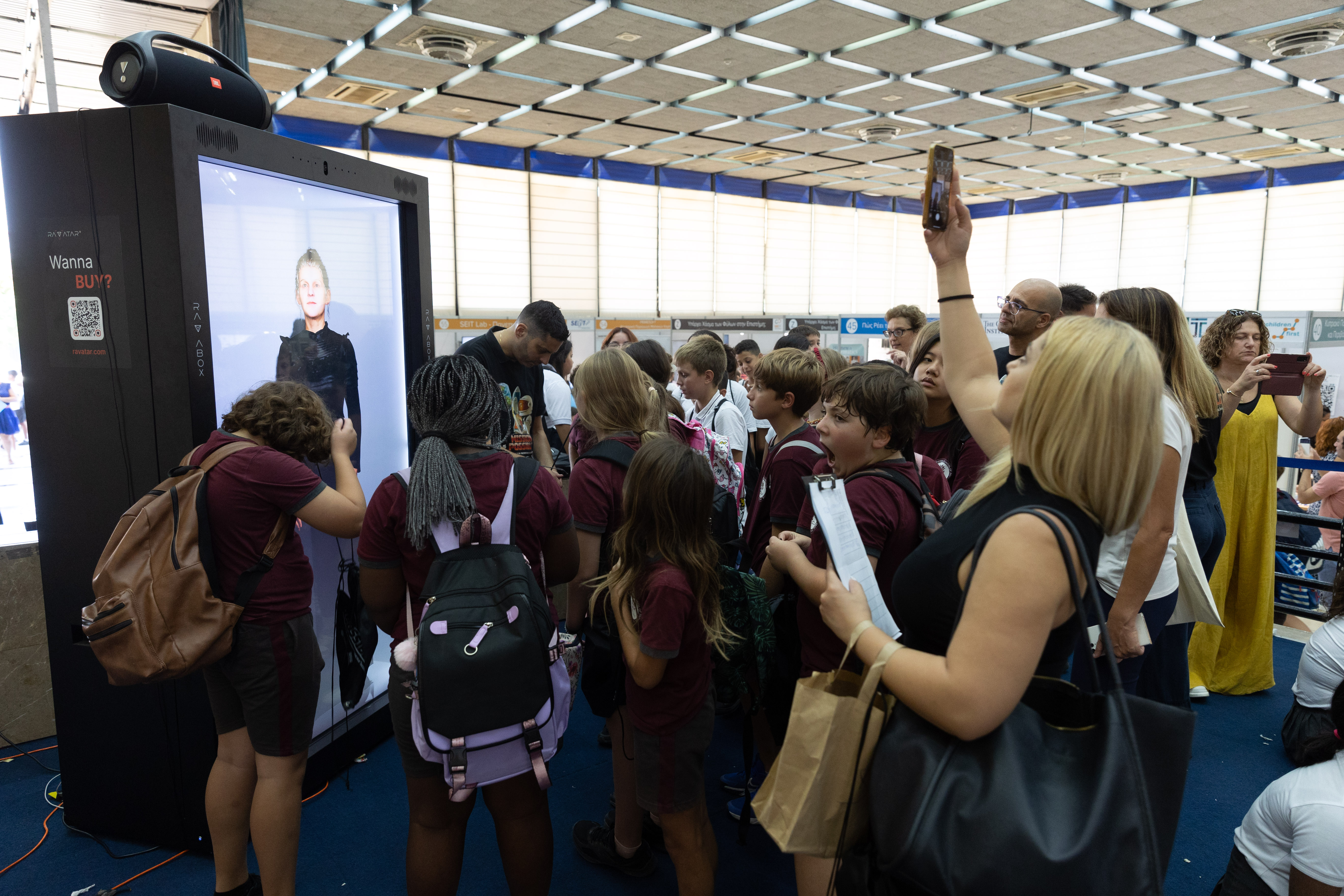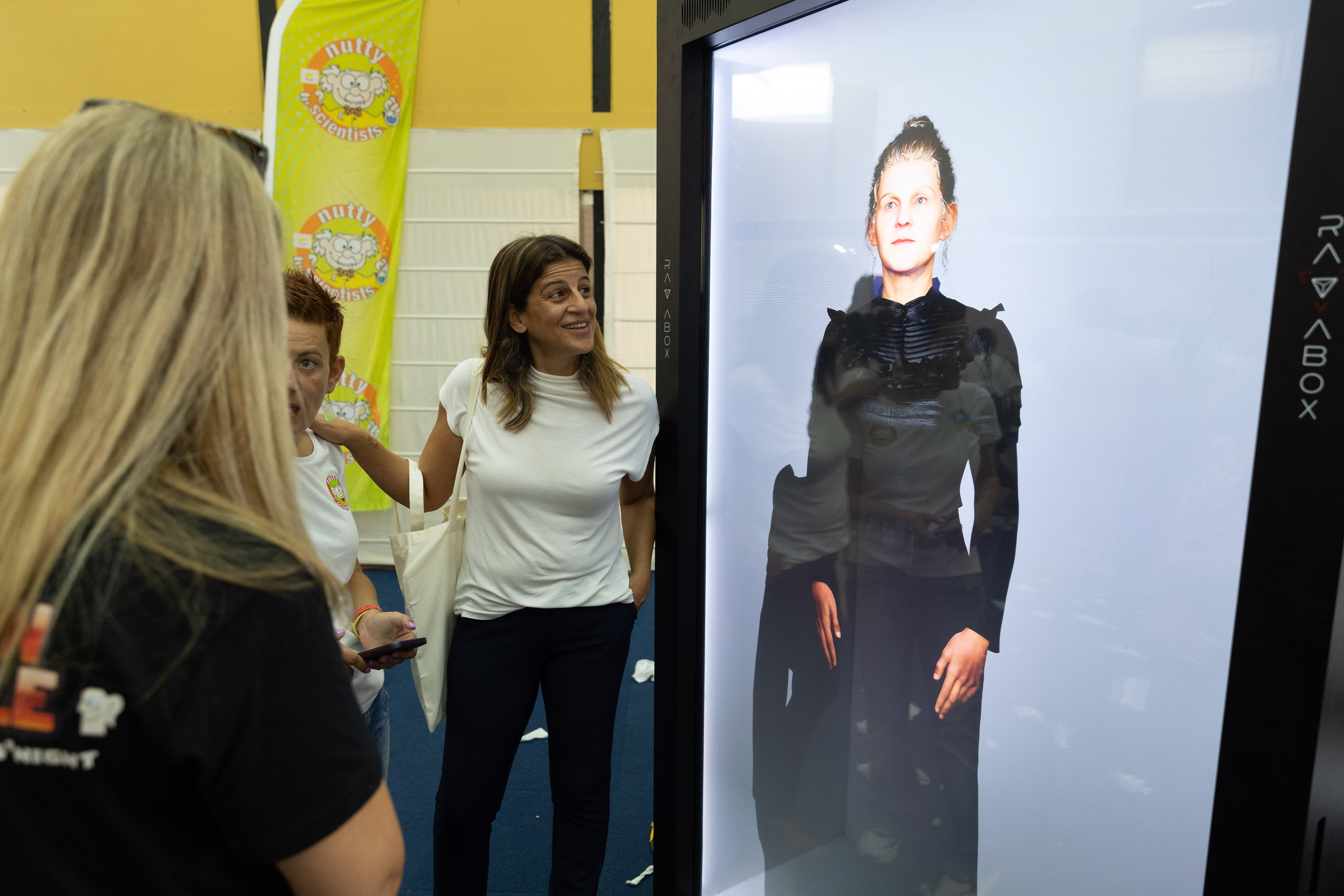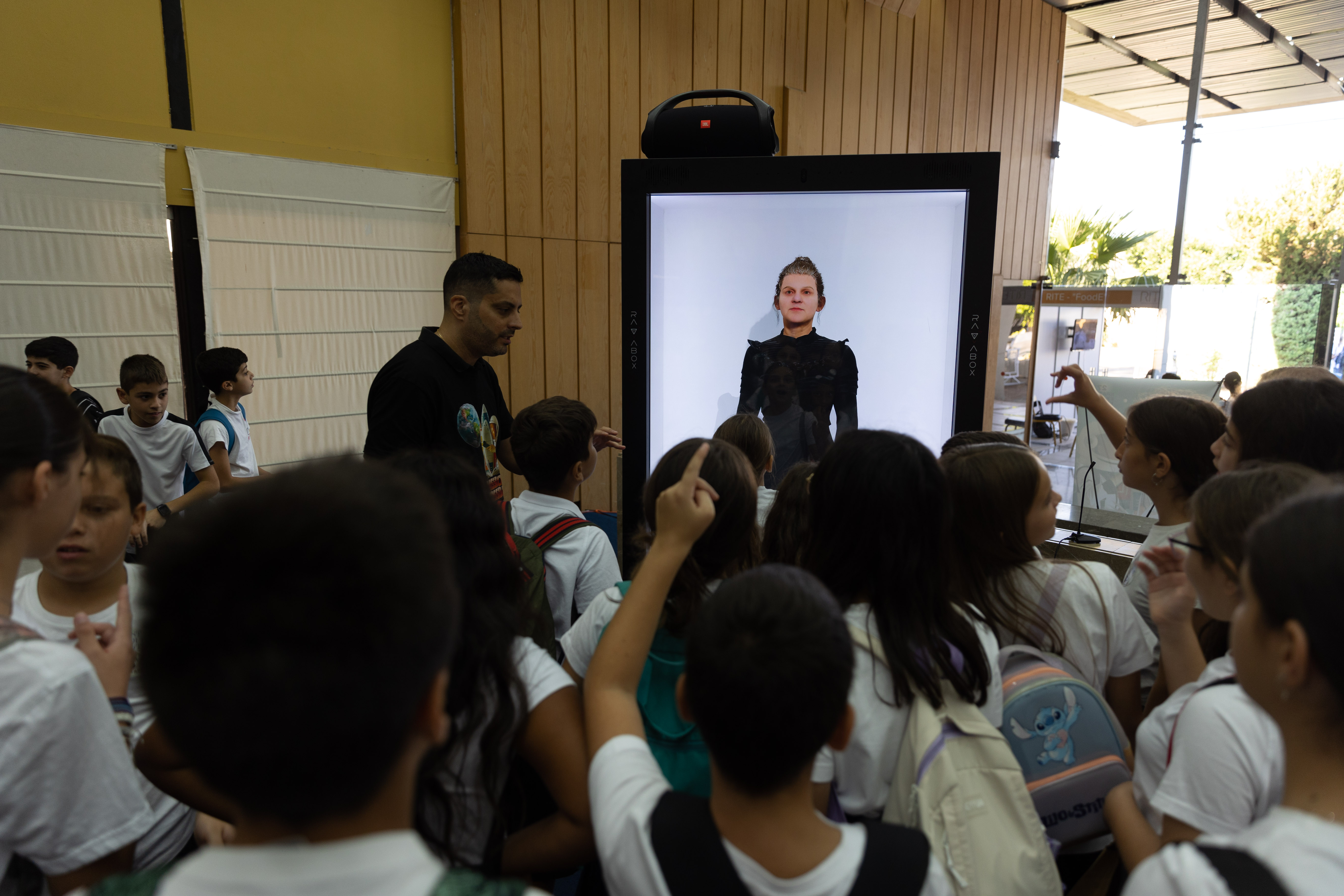RAVATAR made a debut during the European Researchers’ Night 2024 in Nicosia, unveiling its AI-powered hologram of Marie Curie.
The innovative showcase demonstrated how artificial intelligence can transform the way we engage with science and history, bringing the scientist back to life in a way that resonated deeply with the audience.
The European Researchers’ Night, celebrated in 23 countries and over 400 cities, is one of Europe’s largest science events.
Organised by the European Commission, it’s designed to highlight the vital role of researchers in society and inspire the public to take an interest in science.
In Cyprus, the event was hosted by the Research and Innovation Foundation (RIF), which played a crucial role in connecting the public with researchers.
This year’s theme, ‘Mission Possible: Researchers on Board for an Inclusive and Sustainable Future,’ was particularly fitting for RAVATAR’s mission to break down barriers through AI and create seamless connections.
Marie Curie’s contributions to science are well-known. She was the first woman to win a Nobel Prize and the only person to win in two distinct scientific fields—Physics and Chemistry.
Her legacy continues to inspire generations, and RAVATAR’s AI hologram brought her achievements back to life in a way few could have imagined.

Ruslan Synyskyy, CEO of RAVATAR, described the experience by saying “Imagine standing face-to-face with a life-sized, human-like hologram that not only speaks to you but understands you. Our holographic AI avatar is more than just a visual marvel; it’s a bridge between technology and human connection, turning interactions into unforgettable experiences.”
The AI version of Curie, presented in RAVATAR’s 4K holographic display, known as RAVABOX, was able to engage with the audience in real time, answering questions as if she were truly present.
Visitors of all ages, from curious children to scientists, gathered around to ask her about her groundbreaking work in radioactivity, her journey as a pioneering woman in science, and what drove her relentless pursuit of knowledge.

“At the European Researchers’ Night, we demonstrated how technology can transcend both time and space, creating a bridge across eras and disciplines,” Ruslan added.
He continued, “This isn’t merely an educational experiment; it’s a vision for a world where knowledge is vibrant and interactive.”
Furthermore, he emphasised, “Where the curiosity of one generation ignites the creativity of the next.”
The project wasn’t just about technology for technology’s sake; it aimed to make science more accessible and engaging, particularly for younger generations.
As Ruslan put it, “Reimagining Marie Curie as an AI-powered avatar goes beyond simply honouring the past; it’s about revealing the unseen — connecting people with the spirit of discovery itself.”

The impact of this technology didn’t go unnoticed. Demetris Skourides, Chief Scientist for Research, Innovation, and Technology of Cyprus, emphasised the importance of events like the European Researchers’ Night, saying, “This is why events like the European Researchers’ Night are a unique opportunity to cultivate a culture of research, innovation, and technology.”
He further explained, “A culture that will encourage the youth to understand the possibilities offered by these sectors.”
“And to be part of a modern ecosystem, which through its own development, will contribute to the progress of the place,” Skourides concluded.


